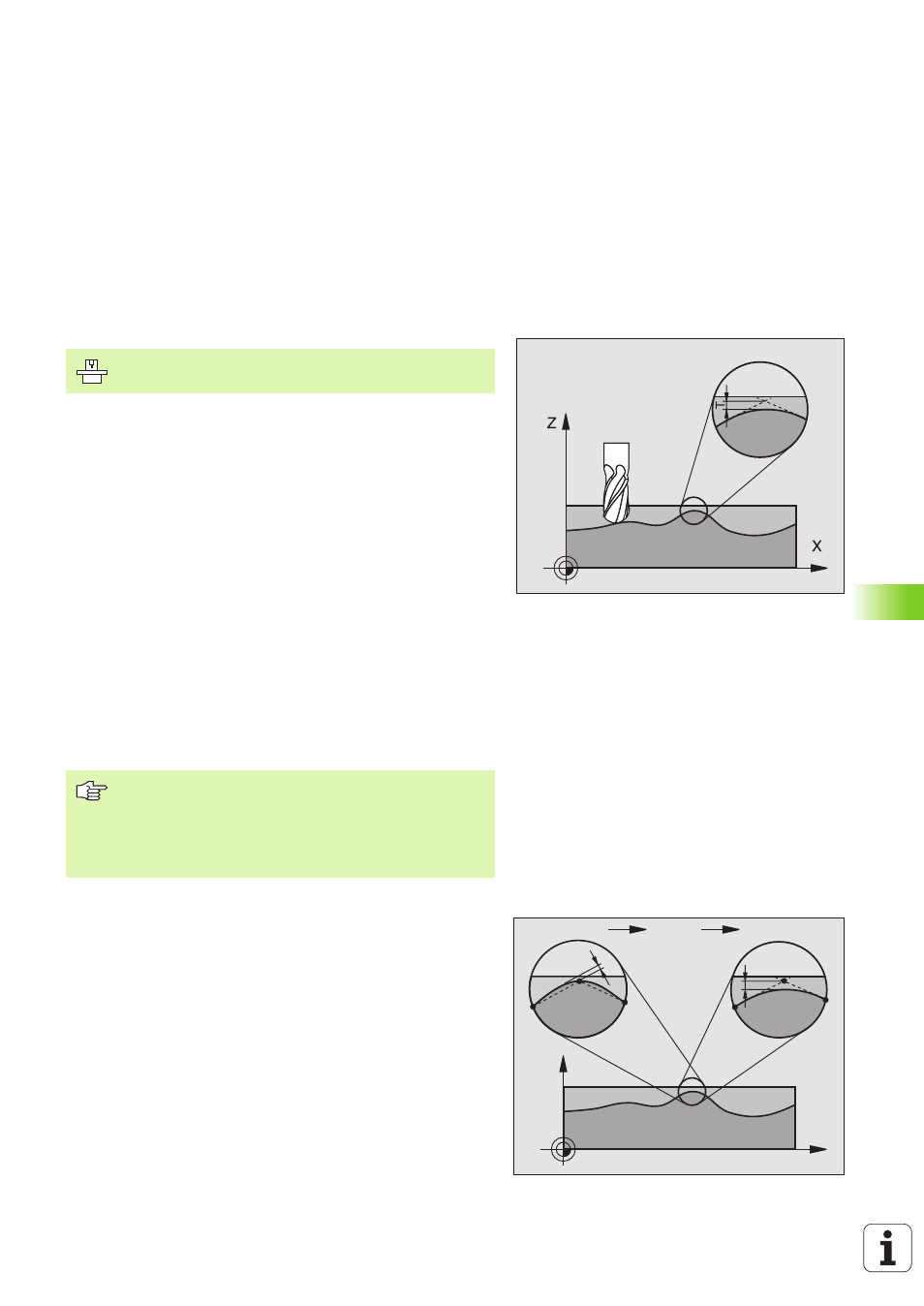Tolerance (cycle 32), 1 0 special cy cles – HEIDENHAIN iTNC 530 (340 49x-03) User Manual
Page 509

HEIDENHAIN iTNC 530
509
8.1
0
Special Cy
cles
TOLERANCE (Cycle 32)
With the entries in Cycle 32 you can influence the result of HSC
machining with respect to accuracy, surface definition and speed,
inasmuch as the TNC has been adapted to the machine’s
characteristics.
The TNC automatically smoothes the contour between two path
elements (whether compensated or not). The tool has constant
contact with the workpiece surface and therefore reduces wear
machine wear. The tolerance defined in the cycle also affects the
traverse paths on circular arcs.
If necessary, the TNC automatically reduces the programmed feed
rate so that the program can be machined at the fastest possible
speed without short pauses for computing time. Even if the TNC
does not move with reduced speed, it will always comply with
the tolerance that you have defined. The larger you define the
tolerance, the faster the TNC can move the axes.
Smoothing the contour results in a certain amount of deviation from
the contour. The size of this contour error tolerance value is set in a
machine parameter by the machine manufacturer. With CYCLE 32, you
can change the pre-set tolerance value and select different filter
settings, provided that your machine manufacturer implements these
features.
Influences of the geometry definition in the CAM system
The most important factor of influence in offline NC program creation
is the chord error S defined in the CAM system. The maximum point
spacing of NC programs generated in a postprocessor (PP) is defined
through the chord error. If the chord error is less than or equal to the
tolerance value T defined in Cycle 32, then the TNC can smooth the
contour points unless any special machine settings limit the
programmed feed rate.
You will achieve optimal smoothing if in Cycle 32 you choose a
tolerance value between 110% and 200% of the CAM chord error.
Machine and control must be specially prepared by the
machine tool builder for use of this cycle.
With very small tolerance values the machine cannot cut
the contour without jerking. These jerking movements are
not caused by poor processing power in the TNC, but by
the fact that, in order to machine the contour element
transitions very exactly, the TNC might have to drastically
reduce the speed.
X
Z
T
S
CAM
TNC
PP
